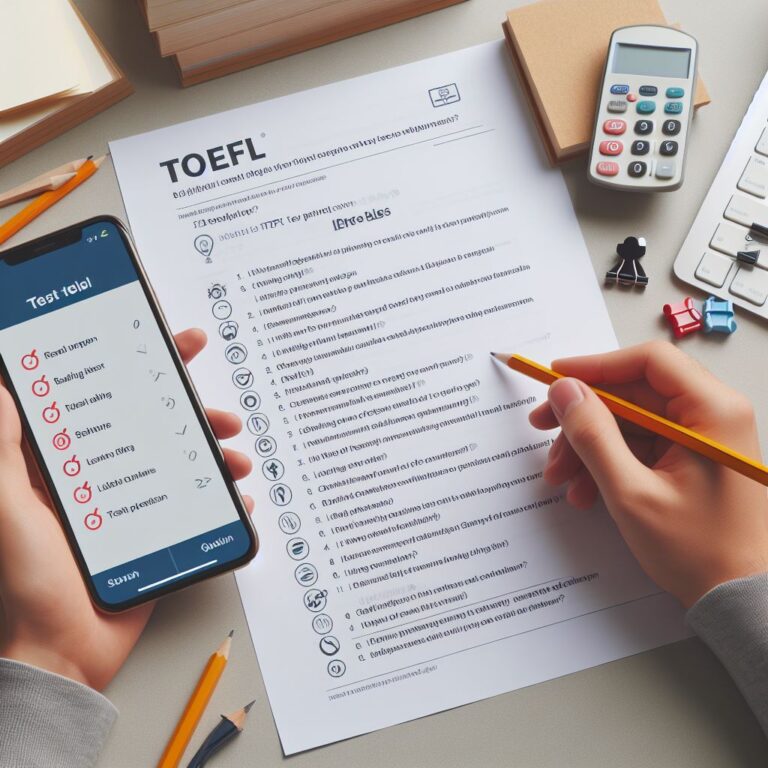TOEFL Speaking Question 3 Integrated
What you will find in this guide:
Question 3, the Integrated Task
TOEFL speaking question three is one of the most challenging parts of the test. It requires you to integrate information from a reading passage and a listening passage, and then speak about them for 60 seconds. In this guide, I will explain the structure of the question, the skills you need to master, and some tips and strategies to ace it.
TOEFL speaking question three consists of three parts: a reading passage, a listening passage, and a speaking task. You will have 45 seconds to read the passage, which is usually about 100 words long and introduces a concept. Then, you will listen to part of a lecture on the same topic that discusses the topic from the reading passage and gives some examples that make the concept more understandable. The listening passage is about 60-90 seconds long. Finally, you will have 30 seconds to prepare your response and 60 seconds to speak. You will be asked to summarize the main points from both passages and explain what the concept is using the examples given in the lecture.
Key Facts
1st – You have 45 seconds to read a short paragraph (about 100 words)
2nd – The reading disappears and you will listen to a lecture about the same topic. The lecture will be between 60-90 seconds.
3rd – The question will appear. You have 30 seconds to prepare your response.
4th – Time to speak. You will have 60 seconds to speak.
How to Approach Question 3
Step 1: Read & Take Notes
The reading part is about 100 words long, and you are given 45 seconds to read it and take notes.
The reading is usually about a specific term or concept which is also the title of the reading. It defines the term and gives some basic details. You have 45 seconds to read it and take notes. You can only see it one time. Some common topics were:
- Biology/Animals – 60%
- Business/Marketing – 20%
- Psychology/Learning – 10%
- Art/History/Literature – 10%
Compassionate Consumerism
Compassionate consumerism is a relatively new trend in the American retail market. In this type of consumerism, when individuals make a purchase a portion of the money they pay is allocated to a charitable cause. Nowadays, individuals often look for ways to contribute to the betterment of humanity, but they don’t always have the financial resources to do so. Compassionate consumerism appears to be a good middle ground. While critics feel that it’s only a marketing ploy aimed at appealing to people in their 20s and 30s, others applaud the effort. They argue that it is desirable for companies to sacrifice profits in order to help those in need.

Step 2: Listen to the Lecture and Take Notes
Use the other half of the paper to take notes about the conversation. Quickly note whether the student agrees or disagrees with the change. I used “XX” to indicate that they don’t. Next, note how they respond to each of the reasons in the reading. Use arrows to show how the reading and listening reasons match up.

Step 3: Take note of context cues!
In the TOEFL integrated speaking tasks, you can use context cues from the reading and listening sections to guide your response and effectively demonstrate a range of vocabulary and grammar. Context cues are words and phrases used in the text and in the conversation that introduce a concept you can use in your response.
For example in the sample reading, there are words such as “appealing” and “desirable”. You can use these words to better support your response and show the use of a range of words at the same time. You can also find some structures in the listening section. Remember that you don’t have to use the exact ideas. Just use the words to express what you want to say.
Step 4: Prepare your response
Summarizing the concept described in the reading passage.
Clearly state some supporting points made in the passage.
Give examples and provide explanations from the lecture to support the explanation of the concept.
Recommended Format
You can always use the same template to organize your answer to TOEFL speaking question 3. Try this one:
| Template | Content | Time |
| According to the reading (topic) is (topic definition) |
| 0-10 Seconds |
In the lecture, the professor delves deeper into this subject by providing an example of/two examples of (topic). To start the lecturer explains that (first example of topic) |
| 11-32 Seconds |
| He/She goes on to say (second example of topic) |
| 33 – 54 seconds |
Sample Question:
Compassionate Consumerism
Compassionate consumerism is a relatively new trend in the American retail market. In this type of consumerism, when individuals make a purchase a portion of the money they pay is allocated to a charitable cause. Nowadays, individuals often look for ways to contribute to the betterment of humanity, but they don’t always have the financial resources to do so. Compassionate consumerism appears to be a good middle ground. While critics feel that it’s only a marketing ploy aimed at appealing to people in their 20s and 30s, others applaud the effort. They argue that it is desirable for companies to sacrifice profits in order to help those in need.
Question:
Using the examples from the lecture, explain what compassionate consumerism is and how it works.
Preparation Time: 30 seconds
Response Time: 60 seconds
Speaking Checklist
To assess your own speaking, it is a good idea to download and use the checklist linked here. Using this checklist makes you aware of the features you need to show in your response and gives you an idea of what you need to put more effort and work on.







Magnificent site. Plenty of helpful info here. I am sending it to a few pals ans additionally sharing in delicious. And certainly, thanks on your sweat!